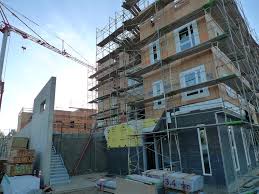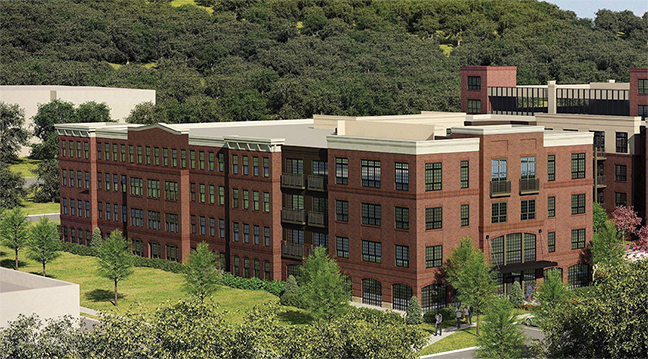Physical Address
304 North Cardinal St.
Dorchester Center, MA 02124
Physical Address
304 North Cardinal St.
Dorchester Center, MA 02124
When journalists, NIMBYs, politicians, and activists make claims about Airbnb taking potential full-time housing stock and converting it to leisure space, they operate under the assumption that the housing supply must be fixed. This assumption is half true: By no means must the housing supply be fixed, just as the supply of laptops, shoes, or milk has no requirement to be fixed. In reality, though, the supply is, yes, somewhat fixed, but that is merely an option, chosen by NIMBY residents, politicians, and misguided housing activists* that force through restrictive construction policies that either largely inhibit or outright prohibit new housing development. Economists Ed Glaeser, Joseph Gyourko, and Raven Saks estimate that what they call the “zoning tax” accounts for, on average, more than 10 percent of the price of the average U.S. home. In cities with extreme restrictions like San Francisco, the zoning tax is as high as 50%! Here’s a thought exercise: Imagine the U.S. had very restrictive laws regarding smartphone production. If a new Apple factory wanted to produce more iPhones, each phone would have to go through a long, onerous, and costly approval process by the local government and regulatory agencies. In addition, nearby established phone factories or incumbent phone owners in many areas could successfully pressure the local government to prohibit the new factory from producing phones. Because of these burdens, the supply of phones rises only very slowly (far less than the growth in phone demand), and many people have to go about sharing a phone with family or friends or diverting huge portions of their monthly budget to owning/renting a scarce phone. In this alternative phone regulation reality, the criticism that “some tiny portion of phones are used for leisure like social media and games rather than important things like work or talking to […]
One common argument against Airbnb and other home-sharing companies is that they reduce housing supply by taking housing units off the long-term market.* As I have written elsewhere, I don’t think home-sharing affects housing supply enough to matter. But even leaving aside the empirical question of whether this will always be true, there’s a theoretical problem with the argument that if someone fails to use their land for long-term rental housing, government must step in. It seems to me that this argument, if applied with even a minimal degree of consistency, leads to absurd results. For example, suppose that Grandma has a spare room in her house, and instead of renting it on Airbnb she allows the room to be unused. Should Grandma be forced to rent out the room? Of course not. A home-sharing critic might argue that an unused room is different from a room that is likely to be rented out to a long-term tenant. Indeed it is- but in fact, Grandma’s failure to rent the room to anyone is more socially harmful than her renting the room on Airbnb. In the latter situation, a traveler benefits (from a cheaper rate than a hotel, or at least for a different kind of experience) and Grandma benefits by getting money from the traveler. By contrast, in the former situation, no one benefits. It could be argued that Grandma’s rights should be unimpeded, but that regulation should be targeted towards the amateur hotelier who seeks to rent out an entire building all-year round, rather than using the building for more traditional tenants. Even here, the argument based on housing scarcity leads to absurd results. Suppose the evil landlord Snidely Whiplash decides, instead of renting out his building on Airbnb, to use the building for a vacation house one day a year […]

People sometimes support regulations, often with the best of intentions, but these wind up creating outcomes they don’t like. Land-use regulations are a prime example. My colleague Emily Washington and I are reviewing the literature on how land-use regulations disproportionately raise the cost of real estate for the poor. I’d like to share a few of our findings with you. Zoning One kind of regulation that was actually intended to harm the poor, and especially poor minorities, was zoning. The ostensible reason for zoning was to address unhealthy conditions in cities by functionally separating land uses, which is called “exclusionary zoning.” But prior to passage of the Civil Rights Act of 1968, some municipalities had race-based exclusionary land-use regulations. Early in the 20th century, several California cities masked their racist intent by specifically excluding laundry businesses, predominantly Chinese owned, from certain areas of the cities. Today, of course, explicitly race-based, exclusionary zoning policies are illegal. But some zoning regulations nevertheless price certain demographics out of particular neighborhoods by forbidding multifamily dwellings, which are more affordable to low- or middle-income individuals. When the government artificially separates land uses and forbids building certain kinds of residences in entire districts, it restricts the supply of housing and increases the cost of the land, and the price of housing reflects those restrictions. Moreover, when cities implement zoning rules that make it difficult to secure permits to build new housing, land that is already developed becomes more valuable because you no longer need a permit. The demand for such developed land is therefore artificially higher, and that again raises its price. Minimum lot sizes Other things equal, the larger the lot, the more you’ll pay for it. Regulations that specify minimum lot sizes — that say you can’t build on land smaller than that minimum […]

If you restrict the supply of housing, other things equal, what will happen to the price? That’s not a trick question. Any competent Econ 101 student would answer correctly that the price will rise. One reporter for the Washington Post gets it. In a hopeful sign of spreading economic literacy, Emily Badger writes: In tight markets, poor and middle-class households are forced to compete with each other for scarce homes. And so new market-rate housing eases that competition, even if the poor aren’t the ones living in it. Over time, new housing also filters down to the more affordable supply, because housing becomes less desirable as it ages. That means the luxury housing we’re building today will contribute to the middle-class supply 30 years from now; it means today’s middle-class housing was luxury housing 30 years ago. Typical critics of soaring housing prices have a much harder time grasping this. They don’t see that zoning rules and restrictions meant to make urban life more “livable” (often for the well-established homeowner) reduce supply and put strong upward pressure on prices. Minimum lot sizes, maximum density restrictions, minimum parking requirements, and so on all contribute to reducing the supply. And it raises prices not only for the wealthy, but also for middle- and lower- income families, as well. Instead, they think that new construction of market-rate housing is somehow the source of the problem, rather than a solution. (Emily Washington and I recently published a useful summary of the literature on the regressive effects of land-use regulation.) Ever wonder how ordinary people could afford to live in major cities before there were rent controls and land-use regulations? Builders built wherever it was the most profitable. The middle-incomers didn’t have to compete with the wealthy for middle-income housing, and the poor then didn’t have to compete with the middle-incomers for low-priced […]

Co-authored by Tony Albert and Jeff Fong SF Curbed recently sat down with Patrick Burt, Mayor of Palo Alto, to get his response to the high profile resignation of Kate Vershov Downing. Downing, of course, was the Palo Alto Planning Commissioner who publicly announced that she will move her family from the city because of high housing prices. Mayor Burt’s response illustrates a complete failure to accept either the nature or the cause of our housing crisis. And were we not so desensitized to this type of thinking here in the Bay Area, it would be hard to distinguish his comments from satire. Too Many…Jobs? Mayor Burt’s first, and perhaps most bizarre, assertion is that Palo Alto’s problem is job growth—both within the city as well as within its Peninsula neighbors. And that part of the solution must be to slow down or displace new job creation. Take a minute and let that sink in. An elected government official is calling out job growth as a problem, and advocating for policies to slow it down. Mayor Burt says that… we’re in a region that’s had extremely high job growth at a rate that is just not sustainable if we’re going to keep [Palo Alto] similar to what it’s been historically. Of course we know that the community is going to evolve. But we don’t want it to be a radical departure. We don’t want to turn into Manhattan. Job growth increases housing demand, and if housing supply increases more slowly than housing demand, housing prices rise to make up the difference. Mayor Burt is willing to admit that housing prices are too high, but actively rejects the idea that Palo Alto needs to significantly intensify land use with town homes or multi-family apartments. This leaves him backed into the absurd corner of addressing […]

In his famous 2010 Ted Talk Matt Ridley points out that a growing human population has facilitated increasing standards of living because more people means a faster growth rate of innovation. He explains that humans’ propensity to exchange means that as a society we all benefit from each other’s ideas. No single person knows how to make a pencil from scratch, but we can all benefit from pencils (and much more complex tools) because collectively we have the knowledge to produce them. Ridley describes technological progress as a product of the collective brain — the space where our “ideas have sex.” Ideas “meet and mate” perhaps most obviously on the Internet, where the best encyclopedia in human history is crowd-sourced. This process is constant in the analog world also. The story of Microplane — a company that went from making printer parts, to woodworking tools, to kitchen gadgets and instruments for orthopedic surgeons — illustrates the innovations that come from ideas meeting and mating across entirely different industries. Cities provide the ideal location for these meetings because they bring together people from varied industries, backgrounds, and priorities. In The Death and Life of Great American Cities, Jane Jacobs identifies four qualities that are necessary for diverse neighborhoods: At least two primary land uses; Small blocks; Buildings of diverse ages and types; and A high density of buildings and people. These characteristics facilitate an urban environment in which people of different professions, interests and income levels come into contact with one another as they go about their daily routines. In turn, this human contact puts people in an ideal position for innovation and entrepreneurship. Sandy Ikeda describes the entrepreneur’s environment as the “action space.” Today, an action space could be in a suburban home for an entrepreneur who creates a digital product that’s sold online. While […]

A problem that pro-housing YIMBYs face in communities nationwide is that the NIMBYs opposing them are much better organized. The reason boils down to the classic problem of concentrated costs and dispersed benefits: the beneficiaries of new housing are scattered, while those who benefit from a housing shortage–and thus higher prices–are concentrated. These organizational skills enable NIMBYs to dominate the discussion, something evident after the recent rejection of a development project in Ardsley, New York. The Jefferson Development Group wanted to build the Saw Mill River project, a development that would include 272 apartments in downtown Ardsley on land now owned by the chemical company Akzo Nobel. During a February hearing for the development, 30 people spoke against it while none spoke in favor. A petition against the project got 1,300 signatures, and houses and streets were adorned with signs reading “STOP THE JEFFERSON.” A blog with that title was also made. As a consequence, Akzo Nobel cancelled its contract to sell the property to Jefferson because they lost confidence that the property would be rezoned from industrial to mixed-use commercial and residential. One complaint was that the project would cause excess traffic. Ardsley, which is an affluent suburb just north of The Bronx, has narrow roads compared to other suburbs in Westchester County. Local developer and placemaker Padriac Steinschneider noted that traffic lights retard the flow of automobiles. The pre-programmed delays impede people, but they do not improve safety because drivers rely on the color of the light more than their own senses. He suggested that replacing traffic lights with stop signs, which force drivers to be alert, would speed traffic in Ardsley. He also discussed how Addyman Square, a towncenter featuring several restaurants and shops, could be made more pedestrian friendly if it was redesigned as a roundabout, […]
Yet another study in a long line of others provides evidence that land-use regulations restrict housing supply. A new paper identifies a correlation between land-use regulations in California cities and the growth rate for housing units. Kip Jackson finds that California zoning rules and other land-use restrictions not only reduce the growth rate of new housing stock, but a new regulation can actually be expected to reduce the existing stock of housing by 0.2% per year. This correlation is greatest when looking only at multifamily buildings, where each new restriction results in 6% fewer apartments built annually. Kip uses panel data on California land-use regulations from 1970-1995. Researchers sent surveys to municipal planning departments to create a dataset including both the regulations in effect in each city and the year they were enacted. The panel dataset allows Kip to use two-way fixed effects. That means that his results control both for factors that affect housing growth in all cities at a given time and for factors that affect growth in a specific city over time. This survey data makes it possible to study both the effects of the total quantity of rules along with the effects of specific rules. Kip finds that rules that are likely to make it more difficult to build in the future lead to an increase in building permits at the time they are implemented. For example, urban growth boundaries and rules that require a supermajority council vote to approve increased residential density spur current year housing permits. This increase is likely due to developers’ belief that building permits will become more difficult to obtain the longer the new regulation is in effect. He points out that some studies that fail to find a relationship between zoning and housing supply may find this null result because of rules that change the timing of development while reducing it over the […]

Monday, Y-Combinator, an early-stage technology startup incubator, announced it will “study building new, better cities.” Some existing cities will get bigger and there’s important work being done by smart people to improve them. We also think it’s possible to do amazing things given a blank slate. Our goal is to design the best possible city given the constraints of existing laws. They are embarking on an undertaking of noble intentions, and I will explain why the technology sector needs to be at the forefront of thinking about cities. However, in the pursuit of designing “new” cities from a “blank slate” they have begun their quest with one fatally flawed premise, that wise technocrats can master-build entirely new cities catering to the infinitely diverse set of needs and desires of yet-to-be-identified citizens. Any visions of city-building must first humbly acknowledge that cities are an “emergent” phenomena. According to wikipedia, “emergence is a process whereby larger entities, patterns, and regularities arise through interactions among smaller or simpler entities that themselves do not exhibit such properties.” What makes cities vibrant are the “spontaneous order” which emerges among city dwellers as they pursue their individual desires. Cities are like the internet – networks, patterns, and interactions emerge not through design but from spontaneous order. Like no entity could conceivably understand or control the internet, no entity has the knowledge to anticipate the desires of millions of individual agents, and design a city accordingly. This is called the “knowledge problem.” According to economist Friedrich Hayek: If we can agree that the economic problem of society is mainly one of rapid adaptation to changes in the particular circumstances of time and place, it would seem to follow that the ultimate decisions must be left to the people who are familiar with these circumstances, who know directly of the […]
Last week, Reason.tv (the multimedia outlet of Reason Magazine) published a video about San Francisco’s YIMBY movement. The video describes the decades of underdevelopment in San Francisco as the result of community activism intended to limit the supply of new construction. As a result, San Francisco’s housing market is severely supply-constrained, and outrageously expensive. The problem has gotten so bad that pro-development, “YIMBY” organizations such as SFBARF and Grow San Francisco have sprung up to counter the anti-development forces. It’s great to see Reason taking notice of the YIMBY movement, and we’d love to see more attention paid to urbanism at libertarian sites. Three of us at Market Urbanism attended the first nationwide YIMBY conference in Boulder that the video mentions, and we’ll be sharing our thoughts on the conference soon. (h/t Jake Thomas at the Market Urbanism facebook group)